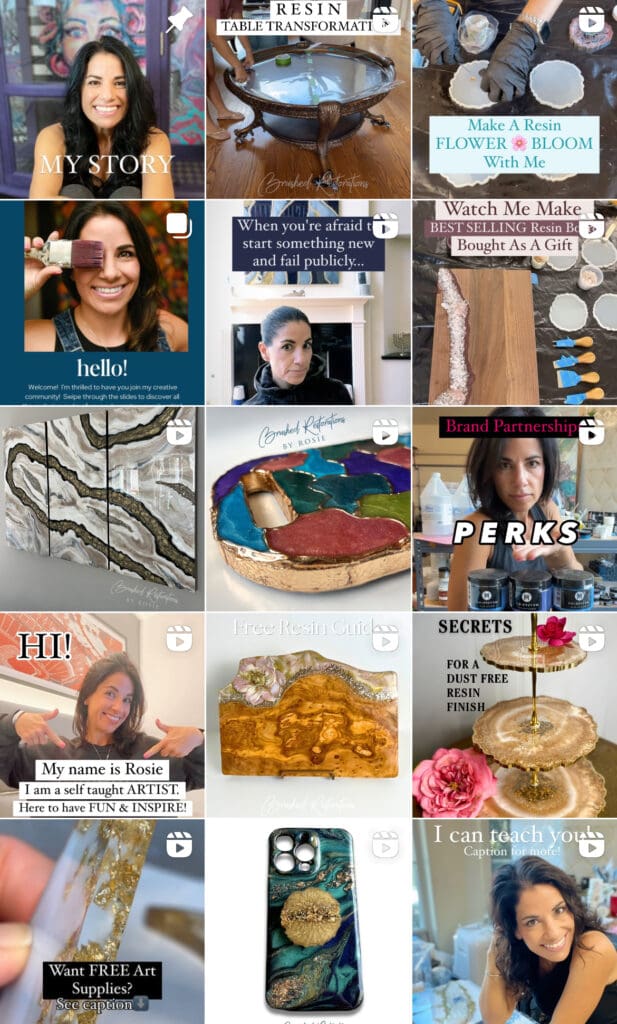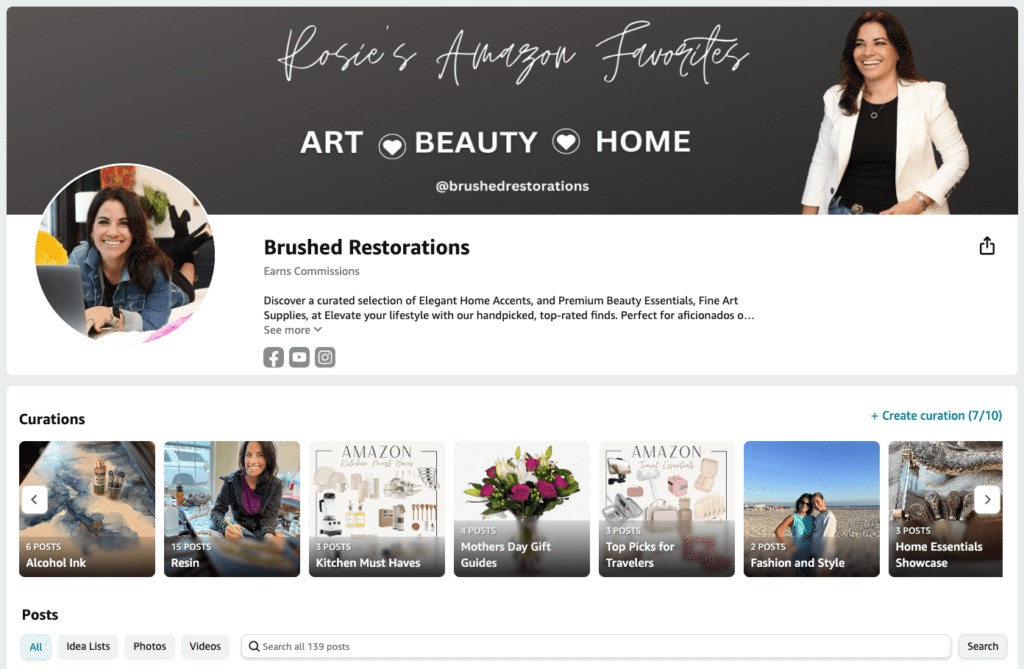Start Your Resin Art Business: Tips for Creative Success

Discover how to transform your artistic passion into a thriving enterprise. Dive into our all-encompassing guide and begin the rewarding journey of starting and scaling your resin art business.
The Resin Art Renaissance
In recent years, the shimmering allure of resin art has captured my imagination and that of artists and collectors alike. Its versatility and beauty offer an expansive canvas for creative expression, turning simple objects into stunning pieces of art. In this guide, I explore the journey of transforming your passion for resin into a sustainable, profitable business.
Laying the Foundation: Building My Brand with Resin
The first step in transforming resin into revenue is understanding your medium. Resin, a versatile substance that cures to a glossy, durable finish, preserves the embedded art within a clear, shining coat. The materials I choose – from the resin brand to the pigments and additives – all contribute to the distinctiveness of my pieces.

Resin Basics: The Gateway Course
As a beginner, the vast sea of information can be overwhelming. My ‘Resin Basics‘ course serves as your compass. I designed this course to guide you through the fundamentals of resin art, from safety protocols to the intricacies of color mixing and curing times. By mastering the basics, you lay a solid foundation for your art business.
Here’s what you’ll learn in the ‘Resin Basics‘ course:
- Material Mastery: An in-depth look at the different types of resins – from epoxy to polyurethane – and their specific applications in art.
- Safety First: Detailed safety guidelines to protect yourself from the fumes and chemicals involved in resin work.
- Technique Training: Step-by-step instructions on basic pouring techniques, creating cells and lacing, and ensuring bubble-free finishes.
- Color and Creativity: How to choose the right pigments, dyes, and additives to bring your artistic visions to life.
This course is more than a learning experience; it’s an investment in your artistry, equipping you with the knowledge to create with confidence and sell with credibility.

Understanding the Market
Knowing your medium is paramount, but understanding where it fits within the art market is what turns a hobby into a business. I research current trends in resin art, identify my target audience, and observe what sells. This market knowledge informs my artistic direction and helps me carve out a unique niche.
Crafting a Cohesive Brand Image
Your brand is your promise to your customer. It tells them what they can expect from my products and what differentiates my art from my competitors’. A cohesive brand image – from my logo and website design to my social media presence – creates recognition and trust with your audience.
In this initial phase, it’s vital to establish a strong brand identity:
- Logo Design: I created a logo that reflects my art’s style and quality.
- Website Development: I developed a professional website showcasing my portfolio, with an easy-to-navigate online store.
- Social Media Engagement: I build a following on platforms where visual arts thrive, like Instagram and Pinterest, by sharing my process and final pieces.
By solidifying my brand and mastering resin art basics, I pave the way to a successful art business that resonates with my audience and stands the test of time.
Business Strategies for Artists: From Passion to Profit
The transition from passion to profit is a pivotal journey for every creative entrepreneur. Resin art, with its vivid colors and mesmerizing patterns, can not only captivate an audience but also open a window to a multitude of business opportunities. In this section, I’ll dive into creating a business plan that resonates with the heart of your market and the best practices for presenting your artwork to the online world.
Crafting a Business Plan: Your Artistic Roadmap
A business plan is the compass that guides your creative enterprise. It’s a comprehensive document that outlines your business goals, strategies for achieving them, target market, competition, and financial forecasts. It also serves as an invaluable tool for communicating your vision to potential investors or partners.
Here’s what to include in your resin art business plan:
- Executive Summary: An overview of your business and plans.
- Company Description: What you offer and what makes your resin art stand out.
- Market Analysis: Insights into your target audience and competitors.
- Organization and Management: Your business structure and management team.
- Marketing Strategies: How you plan to market your resin artwork.
- Product Line: A detailed look at your artwork and any related products or services.
- Funding Request: If you’re seeking investment, detail your funding requirements.
- Financial Projections: Include income statements, cash flow statements, and balance sheets for the next three to five years.
Remember, your business plan isn’t set in stone—it’s a living document that should evolve as your business grows.
Embracing Online Sales Platforms: Your Digital Storefront For Resin Art Business
In today’s digital age, an online presence is not just beneficial; it’s essential. Online sales platforms like Etsy, Amazon Handmade, and your e-commerce store are virtual storefronts that can showcase your resin art to a global audience.
Here are the steps to optimize your online selling strategy:
- Choose the Right Platform: Select a platform that aligns with your brand and where your target audience shops.
- High-Quality Images: Post clear, high-resolution images of your art to capture every intricate detail.
- SEO-Friendly Descriptions: Write product descriptions with relevant keywords to improve discoverability.
- Customer Engagement: Encourage reviews and feedback to build trust and credibility.
- Streamline the Buying Process: Ensure that the checkout process is as smooth and straightforward as possible.
Each platform has its unique features and audience. For example, Etsy is known for handcrafted goods and might be the perfect place to start for unique resin art pieces. Meanwhile, building your website gives you complete control over your brand and how your art is presented.
Leveraging Social Media: Building Community Around Your Art
Social media platforms like Instagram and Pinterest are particularly powerful for visual mediums like resin art. They allow you to build a community around your work, share your creative process, and engage directly with your fans and customers.
- Showcase Your Work: Use your social media accounts to display your latest pieces and share behind-the-scenes glimpses into your creative process.
- Interact with Followers: Engage with your audience by responding to comments, hosting Q&As, and sharing user-generated content.
- Run Targeted Ads: Utilize the advertising tools provided by these platforms to reach a larger audience and drive traffic to your online stores.
Integrating these online strategies helps turn your solo artistic endeavor into a thriving, profit-generating business.
Marketing Mastery: From Studio to Spotlight
Transforming your resin art into a household name requires more than skillful brushstrokes—it requires savvy marketing. In a digital world where everyone is vying for attention, it’s crucial to stand out.
Crafting an Authentic Story
Marketing is storytelling. Your brand narrative is the story arc that connects you with your audience. Share your journey, your inspirations, and the meticulous process behind each resin pour. This story doesn’t just sell a product; it sells an experience, an insight into the world you create with every piece of art.
Social Media: Your Virtual Gallery For Your Resin Art Business
Platforms like Instagram, Pinterest, Facebook, and Youtube are not just social networks; they are virtual galleries, showcasing the depth and breadth of your artistry to an engaged audience worldwide.

- Consistency is Key: Maintain a regular posting schedule to keep your audience engaged and looking forward to your next piece.
- Hashtags and Trends: Use relevant hashtags and participate in trending challenges to increase your art’s visibility.
- Engagement: Interact with your followers, reply to comments, and engage with other artists. Building a community is pivotal to long-term success.
Email Marketing: The Direct Line to Your Audience
Email marketing is your direct line to collectors, enthusiasts, and patrons. It’s where you share exclusive previews, early-bird offers, and the personal side of your art that isn’t captured in social media snippets.
- Build a Subscriber List: Offer an incentive, like my ” Free Resin Guide” for website visitors to sign up for your newsletter. This could be a discount on their first purchase or exclusive access to behind-the-scenes content.
- Craft Compelling Campaigns: Send regular updates about your latest works, upcoming shows, and any workshops or courses you offer.
- Analyze and Adapt: Use email analytics to understand what content resonates with your audience and refine your approach accordingly.
Content Marketing: Educating and Enticing Your Audience
Blogs, podcasts, and YouTube channels offer a space to delve deeper into your craft. They’re platforms for educating your audience about resin art and its intricacies—fostering appreciation and demand for your pieces.
- Blog Posts: Write about the ‘how-tos’ of resin art, or discuss the latest trends in the art world.
- Podcasts: Start a series interviewing other artists or sharing insights into running an art business.
- YouTube: Create tutorials or document your creation process. This not only educates but also builds a narrative around each piece.
Diversifying Income: More Than Just Sales In Resin Art Business
While direct art sales are the core of your business, diversification is the armor that shields against the ebbs and flows of the market. Affiliate sales, brand partnerships, and educational content can open additional revenue streams and bring stability to your creative pursuit.
Earning While Endorsing: Affiliate Marketing
Affiliate marketing is a powerful tool for artists. By sharing your favorite art supplies and tools through affiliate links, you provide value to your audience and earn commissions on sales. It’s a win-win—your followers discover quality products while you earn passive income.
Brand Partnerships: Mutual Value Creation
Brand partnerships elevate your business to new heights. As detailed in my guide, “The Ultimate Guide to Securing Brand Partnerships for Creatives,” these collaborations can provide you with free supplies, increase your brand’s exposure, and even offer direct compensation for campaigns.

Amazon Storefront and Commissions
An Amazon Storefront allows you to curate a list of recommended products. However, if it’s underperforming, you’re missing out on potential income. That’s where “Profit Amplifier: Creative’s Guide to Unlocking Amazon Onsite Commissions” comes into play. This guide details the strategies I used to boost my Amazon earnings from negligible to a consistent $100-500 per month.

Online Courses: Sharing Your Expertise
Lastly, online courses are an avenue not only for income but also for sharing your expertise. Courses like “Resin Basics,” “Geode Resin Art,” and “Epoxy Resin Top Coat” can empower others while creating a steady revenue stream for you.
Diversifying income solidifies your financial foundation, ensuring that you can continue to create art without the pressure of selling each piece immediately. When considering your online courses consider platforms like Teachable. It’s about building a resilient, multifaceted business where your creativity isn’t stifled by financial constraints.
Online Presence and Sales: Showcasing Your Art to the World
In the digital era, an artist’s online presence can be as compelling as a gallery display. Your virtual storefront is the bridge connecting your art to the global audience.
Choosing the Right Platform
Your choice of platform can influence the type of audience you attract and the kind of sales you make. Etsy, with its community of artisans, or a dedicated Shopify storefront, can serve different aspects of your business. Consider where your target audience likes to shop and start there.
Optimizing for Online Sales
The key to selling online is presentation and ease of purchase. Clear, high-definition photos, engaging product descriptions, and a seamless checkout process are non-negotiable elements. Therefore, regularly updating your inventory and consider using analytics to understand customer behavior, further optimizing your sales funnel.
Networking and Community Engagement: The Artist’s Collective
Art thrives in community. Participating in artist collectives and online forums can open doors to collaborations, exhibitions, and peer learning. I have met some of my closest friends through my art and groups I have joined.
Engaging with Fellow Artists
Sharing your journey, challenges, and triumphs with fellow artists can lead to growth and opportunity. Whether it’s through social media groups, art forums, or local meetups, these connections can become a source of support and inspiration.
Customer Relationships
Building relationships with your customers is just as crucial. Engage with your followers, share stories about your creative process, and listen to their feedback. This two-way interaction can turn a one-time buyer into a lifelong patron.
Financial Management: The Art of Numbers
Budgeting for Your Resin Art Business
Balancing the books may not be as thrilling as creating art, but it’s an essential aspect of running a successful business.
Learn to budget for materials, time, and unexpected costs. By keeping track of expenses and income, ensuring you price your artwork not just to cover costs but also to reflect its value.
Diversifying Revenue
Your art business can benefit from diversifying income. My guide, “Profit Amplifier,” demonstrates how I expanded my revenue streams from negligible to significant through Amazon commissions. It’s a testament to how diversification can stabilize and grow your creative business.
Scaling Your Resin Art Business: Growth Strategies
Scaling your business means expanding your brand’s reach and capacity to fulfill orders without compromising on quality.
Expanding Your Offerings
Consider diversifying your product range, offering limited editions, prints, or even branching into digital products. This not only increases your market appeal but can also stabilize your income.
Hiring Assistance
As demand grows, you may need to hire help. Whether it’s for packaging, customer service, or additional artists, expanding your team can ensure that your business thrives.
Advanced Marketing Techniques: Beyond the Basics
Once you have a grasp on fundamental marketing strategies, it’s time to delve into advanced techniques.
SEO and Content Marketing
Optimize your website and content for search engines to attract organic traffic. Use analytics to refine your SEO strategies and create content that resonates with your audience.
Long-term Brand Partnerships: Building Enduring Success
Targeting and Retargeting
Securing long-term brand partnerships can provide consistent benefits, from free supplies to expanded exposure.
Learn to target your ideal customers with ads and retarget them to keep your art top-of-mind. Effective targeting means your advertising budget is spent on those most likely to purchase your work.
The Art of Negotiation
Learn to negotiate partnerships that provide mutual value. My experiences with brands like Alumilite Resin have taught me the importance of aligning with companies that resonate with my brand’s ethos and artistic vision.
Conclusion: Your Creative Legacy Awaits
Your journey in resin art is more than a business venture; it’s the creation of a legacy. With each piece of art, you share a part of your story, and with each strategic step, you build a brand that can sustain and grow alongside your creative ambitions.
FAQs
How do I identify the best platform to sell my resin art?
Choose a platform that aligns with your brand and where your target audience shops. Consider factors like the fees, the community, and how the platform’s features can showcase your art effectively.
What strategies can I use to effectively market my art online?
Leverage social media to tell your story and connect with your audience. Utilize email marketing to share updates and offers, and consider paid advertising to reach a wider audience. Engage with your community consistently to build a loyal customer base.
How can I create multiple income streams as a resin artist?
Diversify beyond selling original pieces by offering prints, teaching courses, creating YouTube content, and engaging in affiliate marketing. Brand partnerships can also provide additional income and exposure.
What are the key considerations when scaling up my art business?
When scaling, consider the demand for your work, your capacity to produce, and the quality you can maintain. Plan financially for expansion, and consider hiring help or partnering with manufacturers to increase your production without sacrificing quality.
